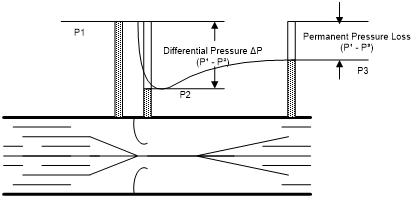Orifice Plates - Applications
Orifice plates (primary element) are manufactured to stringent guidelines and tolerances most commonly used for measuring the flow rate, for restricting flow and for reducing pressure. The principle of a flow restriction creating a differential pressure to measure the flow rate of liquids, gases and steam applications using a secondary device flow transmitter or flow indicator which then converts the differential pressure measurement into an analog 4-20mA signal or digital signal directly into the display which provides instantaneous flow rate. Common orifice plate designs available are:
- Sharp - Edge (Concentric)
- Square - Edge (Eccentric)
- Square - Edge (Segmential)
- Radius (Nozzle) - (Quadrant)
Volumetric or mass flow measurement dependent on calculations and orifice plate design can be measured accurately. Our nozzle type orifice plate provide a convergent curved profile leading to a cylindrical section (throat), low friction to handle abrasive fluids that typically erode traditional sharp edge orifice plates can be measured effectively with the nozzle type orifice plate.
Flow nozzles are particularly suited for measurement of steam flow and other high-velocity fluids, fluids with some solids, wet gases, and similar materials. Because the exact contour is not critical, the flow nozzle can be expected to retain good calibration for a long time under erosion or other hostile conditions. Because of its streamlined contour, it tends to sweep solids or moisture through the throat and is far superior to orifice plates in these services.
Orifice plates are a cost effective way to measure flow, restrict flow or reduce pressure in the piping system in a variety of industrial applications such as:
- Natural Gas
- Power Generation (steam)
- Petrochemical and Refineries
- Water Treatment Plants
- Oil Filtration Plants
Orifice plates (primary Element) of various shapes and size are still the most common form of measuring differential pressure due their versatility, low cost, reliability and accuracy. Technology advancements in the flow transmitters (secondary element) that translate the differential pressure as well compensation for inlet pressure and temperature variations in providing accurate flow measurement. Other improvements include the ability to diagnose the secondary device remotely for errors further reducing unnecessary maintenance cost.

Permanent pressure loss is the inlet pressure minus the recovered outlet pressure the higher the beta ratio the lower the PPL (Permanent Pressure Loss). The beta ratio is the orifice bore diameter divided by the the pipe inside diameter B=d/D where B - Beta Ratio, d - Bore Diameter and D - Pipe Inside Diameter.
Bernoulli principle which states that the sum of all energy in the flow must remain constant regardless of conditions. Specifically for DP Flow, this means that the sum of the static energy (pressure), kinetic energy (velocity), and potential energy (elevation) upstream equals the static, kinetic, and potential energy downstream.


